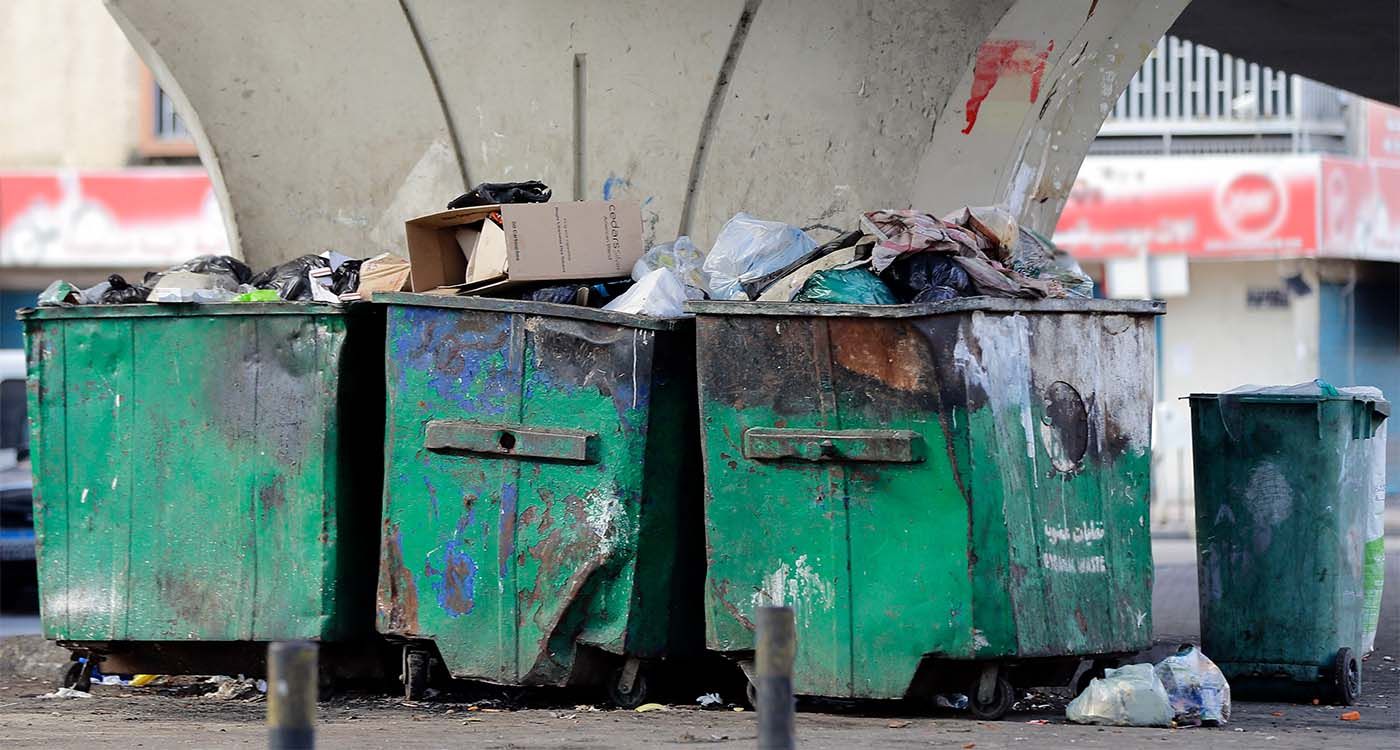
The Parliamentary Environment Committee met on Wednesday under the chairmanship of MP Ghayath Yazbeck, joined by Minister of Environment Tamara el-Zein and Minister of Finance Yassine Jaber.
Lawmakers discussed amending Article 28 of Law No. 80/2018 to allow municipalities to charge for waste treatment at actual cost in the currency currently in circulation. This measure is considered urgent, as the municipalities’ independent fund has been depleted and the Ministry of Finance can no longer finance the service.
Yet, the debate raises a larger question: How far has Lebanon really progressed in addressing its waste problem?
Waste Generation and Shifting Composition
In 2018, Lebanon produced about 2.679.992 million tons of solid waste annually, or roughly 7,300 tons per day, according to a 2024 report by the Council for Development and Reconstruction (CDR).
The economic crisis caused a roughly 25% drop in 2022, reducing daily production to 5,600 tons. The CDR projects that waste volumes will not return to 2018 levels for another five to seven years.
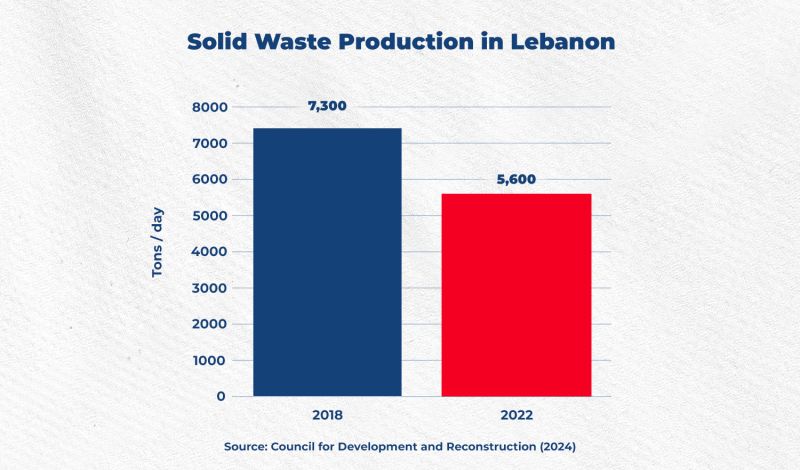
World Bank data shows organic waste rose from 50-55% of the total in 2017 to 69-72% in 2021. Paper and cardboard declined from 15-17% to 4-5%, while plastic increased from 10-13% to 11-14% over the same period.
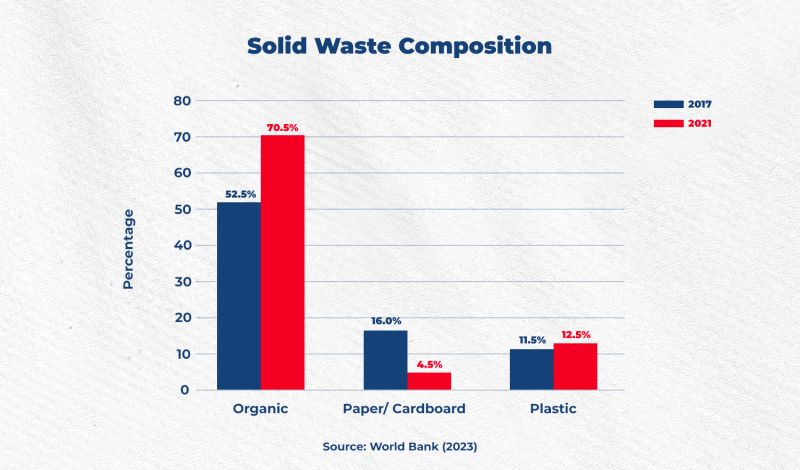
Treatment vs. Disposal
Lebanon has a theoretical treatment capacity of 6,390 tons per day, enough to meet current demand, but only 440 tons are actually processed daily. This represents just 7.9% of total waste generated and 6.8% of the available capacity.
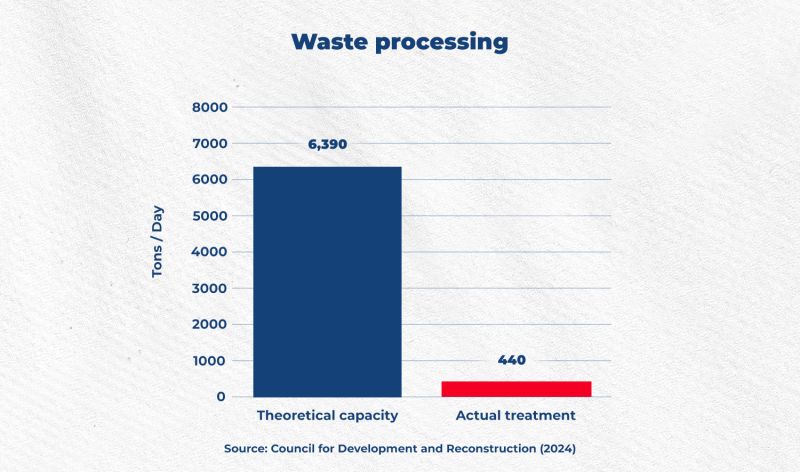
The CDR reports that 98.7% of waste ends up in landfills, whether controlled or illegal, compared to 77.3% in 2018. The World Bank reports that open dumps, burning or illegal disposal increased from 22% in 2018 to 42% in 2022.
Eight operational landfills currently receive about 3,182 tons per day, exceeding their design limits, while illegal dumps are estimated at more than 1,000 nationwide.
In 2021, Lebanon generated 46,000 tons of electronic waste (WEEE), but only 0.09 kilotons were processed in an environmentally sound manner. Used tires amount to about 20,000 tons per year, with only three official collection and recycling facilities.
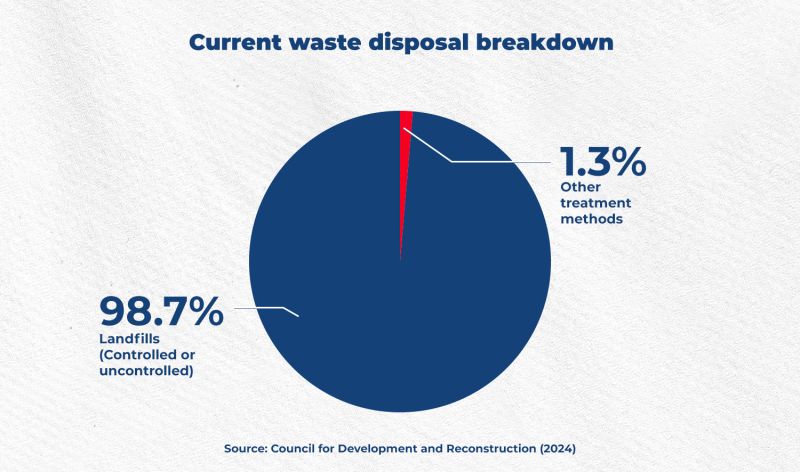
Cost and Governance of the Sector
Before the 2019 crisis, the state spent about 180 million US dollars a year on waste management, while the environmental damage caused by waste was valued at roughly 200 million dollars annually, according to the World Bank.
Today, municipalities devote between 75 and 100% of their budgets to waste collection and treatment, in some cases operating at a deficit.
After years of patchwork measures, Lebanon risks turning its waste crisis into a permanent fixture, leaving future generations with a toxic legacy they will have no choice but to confront.


Comments